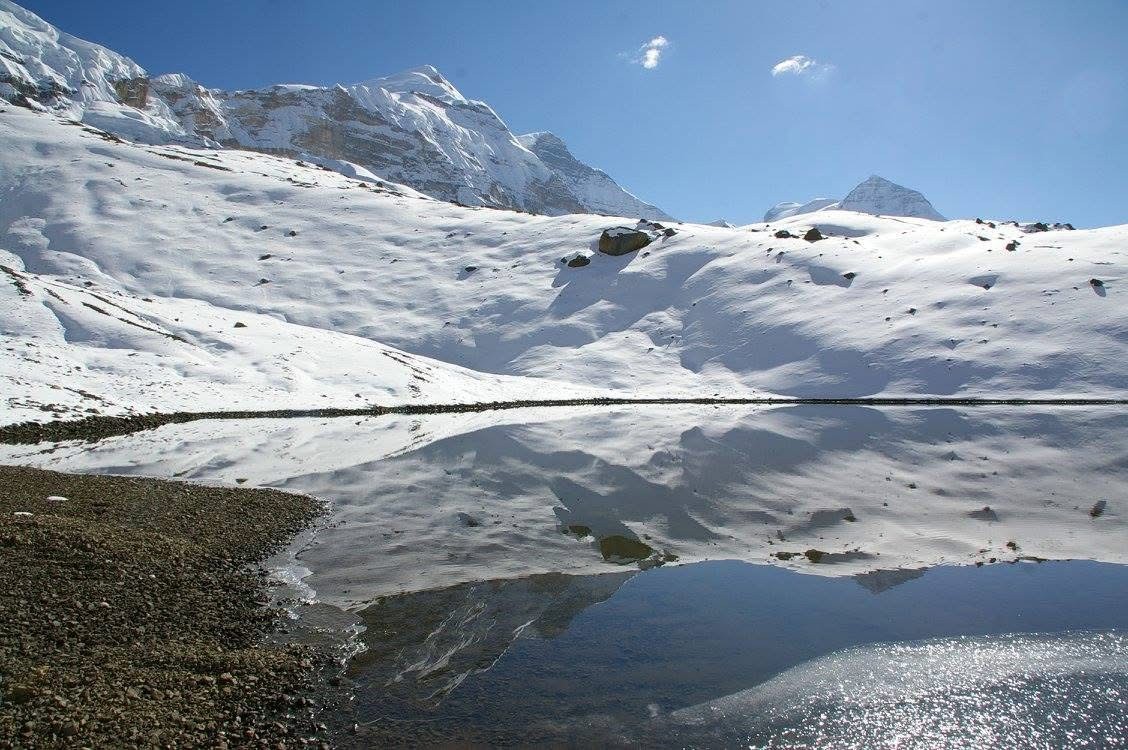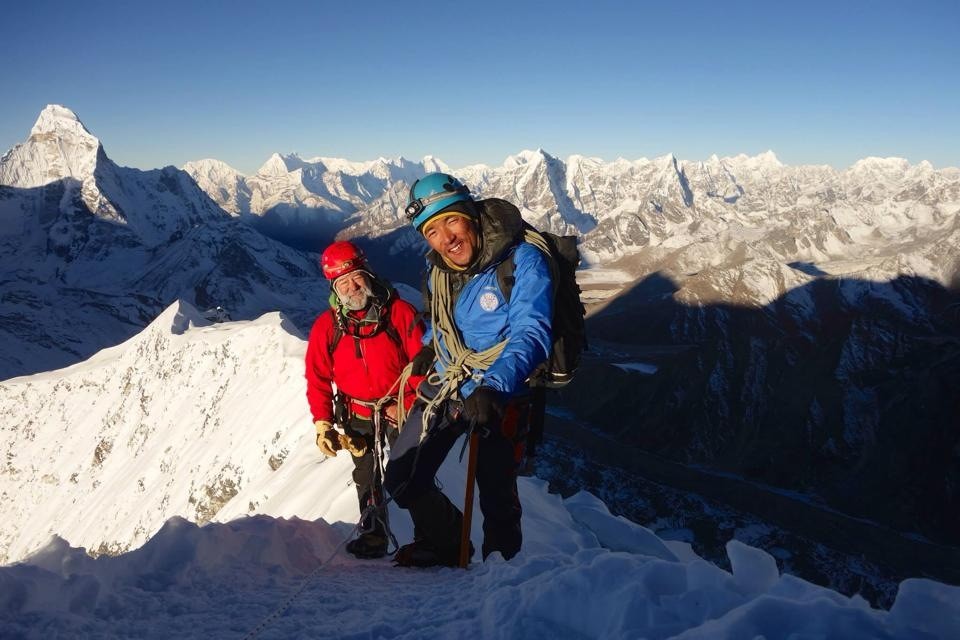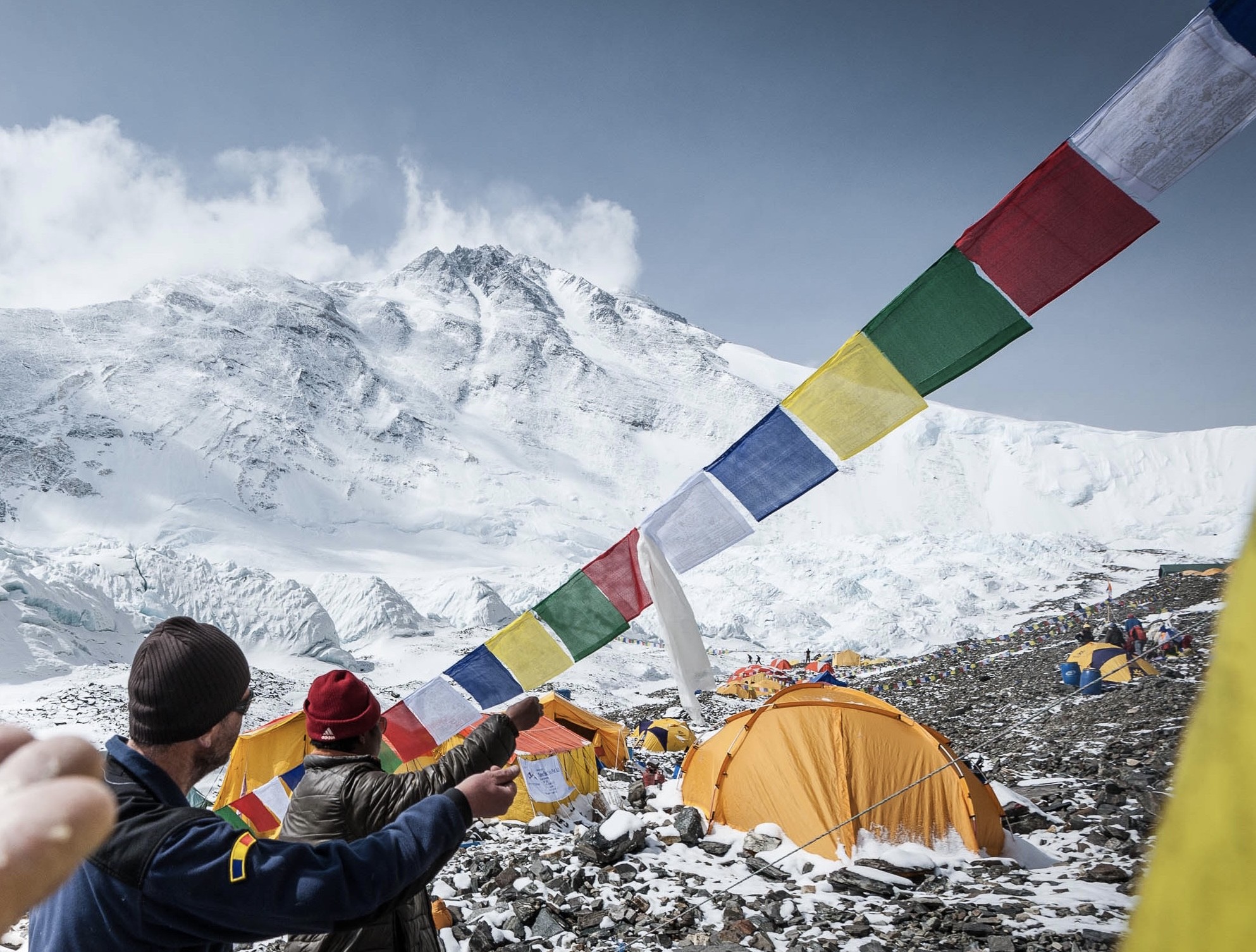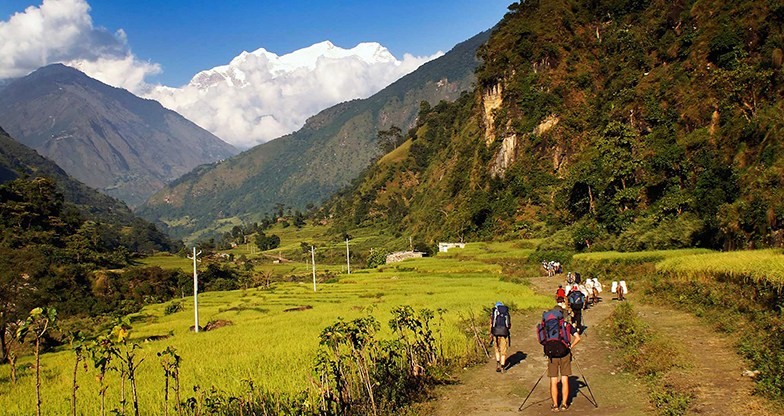

Saribung Peak Climbing journey, a newly explored peak climbing in Nepal, encompasses the remote regions of Nepal Himalayas – Jomsom, Mustang “Hidden Valley”, Nar-Phu Valley and many other landmarks of Damodar Himal in the company of majestic mountain sceneries, diverse cultures, and geographical variations. It is challenging and very popular trekking trail with beaten track and difficult pass. This is an expedition-style journey through Upper Mustang, in Western Nepal, culminating in an ascent of Saribung Peak (6,328m). This adventure is aimed at people who want a unique experience with an emphasis on trekking with a few days of climbing thrown into the mix. For mountaineering, it is easy to do Expedition but there are many passes with ice and creases in between the Damodar Kunda region and Nar-Phu valley.
Saribung peak is located in remote parts of Mustang region of Damodar Himal, close to the border of China (Tibet). Though the peak climbing journey is very much pleasant and easy at times the climbers have to cross the high passes like Saribung La over 5,600 meters and many other. At some sections, the trail even passes through the off-the-beaten-tracks and thereby results into the summit of Mt. Saribung. In over all, the panoramic mountain vistas form the top of Mt. Saribung, journeying through the rugged landscapes, and encountering the very much primitive culture of the region bring you an everlasting adventure experience in your life.

Trip Highlight
DAY
1
DAY
2
DAY
3
DAY
4
DAY
5
DAY
6
DAY
7
DAY
8
DAY
9
DAY
10
DAY
11
DAY
12
DAY
13
DAY
14
DAY
15
DAY
16
DAY
17
DAY
18
DAY
19
DAY
20
DAY
21
DAY
22
DAY
23
Trip Start: 2025-10-10
Trip End: 2025-10-30
spots available
Trip Start: 2026-04-20
Trip End: 2026-05-10
spots available
Having the right equipment on your adventure trips will make almost as much difference to your success, safety, comfort, and enjoyment as any physical training you do. It is essential that you take the time to acquire the correct gear; don’t wait for the last minute to find out your local shop doesn’t have your size. This equipment is expensive, but you can often find great sales online and at your local gear store. The purpose of this gear list is to help guide your purchases.
This list is a guide. While you are required to bring everything on this list, there are numerous options, brands, and versions of each piece of equipment, unless otherwise noted. Using our current suggested brand list we encourage you to shop around, do research, use your experience and the listed features to find the best gear for you.
During your time in the mountains, you will encounter a very wide range of temperatures and weather conditions. At one end of this range is the pleasantly warm and beautiful low land, while at the other end of the spectrum is found the cold and often windy weather of the highest peaks in the world. The equipment you bring must function well in a wide variety of conditions. Your clothing should be warm, lightweight, dry quickly, and allow good freedom of movement. The layering principle, based on several thin layers of insulation
(rather than one thick one), covered with an outer weatherproof shell, meets these needs well.
A Note on Packing
For your international flights, we recommend that you pack all your equipment in your two duffle bags. Do not simply pack your backpack (since the straps can be damaged by the baggage handling machines). It is important to lock these bags for their trip. Depending on the airport, you may be able to put your travel locks on after TSA has searched the bags. If not, Lock the bags with Zip Ties. If the TSA cuts off the zip-tie to search your bag, they will replace it. You will still need the travel locks to lock your bags in the hotel and during the expedition. Generally, you will take one duffel up to Base Camp, and leave one in the hotel in Kathmandu with your belongings for your time in the city. Your trek in duffel will only be accessible in the evenings (with items such as changes of clothing, sleeping bag), and your day pack will hold vitals such as water, layering, blister kit, and camera.
Important Notes:
Tips:
Clothing
Footwear
Handwear
Headwear
Climbing Gears
Backpacking
Accessories
Hygiene and first aid
Others
1
Saribung Peak is one of the famous trekking peak destinations in Nepal. It offers one of the greatest views of your life. However, climbing this peak does demand physical strength and mental preparedness. Below are some common factors that determine the difficulty of this climb: Weather condition The temperature during the climb Trekking route you choose to follow Your physical fitness level Basic climbing and mountaineering skills Probability of altitude sickness Clothing and climbing equipment.
2
You can climb Saribung Peak in any season. However, considering the clear weather during most times of the day, the best time for Saribung Peak Climb is during Spring (March to May) and Autumn (September to November). Most of the time, the sky remains clear during these two seasons to get the best view of the mountain ranges. However, the weather in the mountain region can be unpredictable. Wind speed and cloud position constantly keep changing. You may start on a bright sunny day, but the weather can soon change to cloudy and windy. Make sure you set a minimum of 30 days for Saribung Peak Climb, in case of bad weather.
3
To join the Saribung Peak and Upper Mustang expedition and have a good chance of success, you need: A clean bill of health, Experience of previous expeditions above 5,500m , Scrambling experience to Grade 2 & Alpine F mountaineering experience.


